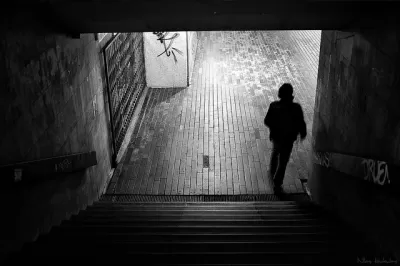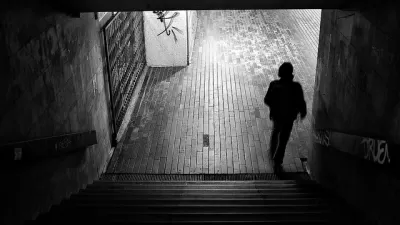The October issue of Land Lines reveals the remarkable story of how an estimated one million people came to live in subterranean apartments in Beijing.

Annette M. Kim, associate professor at the Sol Price School of Public Policy at the University of Southern California, reports on the market and policy conditions that drove so many residents to live underground.
According to the abstract for the article, "an estimated one million people are living in subterranean apartments in Beijing, where affordable housing near employment is scarce for the greater city’s 23 million inhabitants (Xing 2011). These units are often windowless subdivisions in basements and air raid shelters, and the median size is 9.75 square meters."
The city's subterranean spaces result "from a policy dating to 1950 that requires all new buildings to have common basements and air defense shelters. Construction codes specify building guidelines, including the provision of infrastructure such as electricity, water, and sewers. This supply of underground space has grown exponentially amid China’s extraordinary building boom in recent decades. Some complexes contain as many as 600 units below street level."
The article provides analysis of the underground market, the housing policy that enabled, and then reacted to, the underground conditions, and recommendations for making rental housing affordable in Beijing.
FULL STORY: Hidden City: Beijing’s Subterranean Housing Market

Alabama: Trump Terminates Settlements for Black Communities Harmed By Raw Sewage
Trump deemed the landmark civil rights agreement “illegal DEI and environmental justice policy.”

Planetizen Federal Action Tracker
A weekly monitor of how Trump’s orders and actions are impacting planners and planning in America.

The 120 Year Old Tiny Home Villages That Sheltered San Francisco’s Earthquake Refugees
More than a century ago, San Francisco mobilized to house thousands of residents displaced by the 1906 earthquake. Could their strategy offer a model for the present?

Opinion: California’s SB 79 Would Improve Housing Affordability and Transit Access
A proposed bill would legalize transit-oriented development statewide.

Record Temperatures Prompt Push for Environmental Justice Bills
Nevada legislators are proposing laws that would mandate heat mitigation measures to protect residents from the impacts of extreme heat.

Downtown Pittsburgh Set to Gain 1,300 New Housing Units
Pittsburgh’s office buildings, many of which date back to the early 20th century, are prime candidates for conversion to housing.
Urban Design for Planners 1: Software Tools
This six-course series explores essential urban design concepts using open source software and equips planners with the tools they need to participate fully in the urban design process.
Planning for Universal Design
Learn the tools for implementing Universal Design in planning regulations.
Clanton & Associates, Inc.
Jessamine County Fiscal Court
Institute for Housing and Urban Development Studies (IHS)
City of Grandview
Harvard GSD Executive Education
Toledo-Lucas County Plan Commissions
Salt Lake City
NYU Wagner Graduate School of Public Service




























